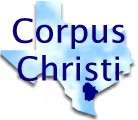

|

|

|

|

|

|

|

|

|

|
TxDOT Corpus Christi CCTV Equipment Packages |
 |
The following equipment packages are associated with the "TxDOT Corpus Christi CCTV" element. Select the "Details" icon to see the detailed process specifications that support each equipment package, or consult the National ITS Architecture web site for more information.
This Equipment package provides the capabilities to monitor traffic flow in major intersections and on main highways for urban areas and to monitor road conditions using fixed equipment such as loop detectors and wireline communication.
Roadway Equipment Coordination
![]()
This equipment package coordinates field equipment that is distributed along the roadway by supporting direct communications between field equipment. This includes coordination between remote sensors and field devices (e.g., Dynamic Message Signs) and coordination between the field devices themselves (e.g., coordination between traffic controllers that are controlling adjacent intersections.).
Ramp meters, CMS and other freeway control effects which will control traffic on freeways.
This Equipment package provides incident detection capability to reside at the roadside. For example, advanced CCTV's with built-in incident detection algorithms would allow the actual detection function to be roadside rather than transmitting images to a center for visual or automated detection.
This Equipment package provides the capabilities to control traffic signals at major intersections and on main highways for urban areas. This Equipment package is generally constrained to a single jurisdiction.
Roadway Work Zone Traffic Control
![]()
This equipment package directs activity in work zones, controlling traffic through portable dynamic message signs (DMS) and informing other groups of activity (e.g., ISP, TM, other maintenance and construction centers) for better coordination management. Work zone speeds and delays are provided to the motorist prior to the work zones
 Web Spinner Technology.
Web Spinner Technology.